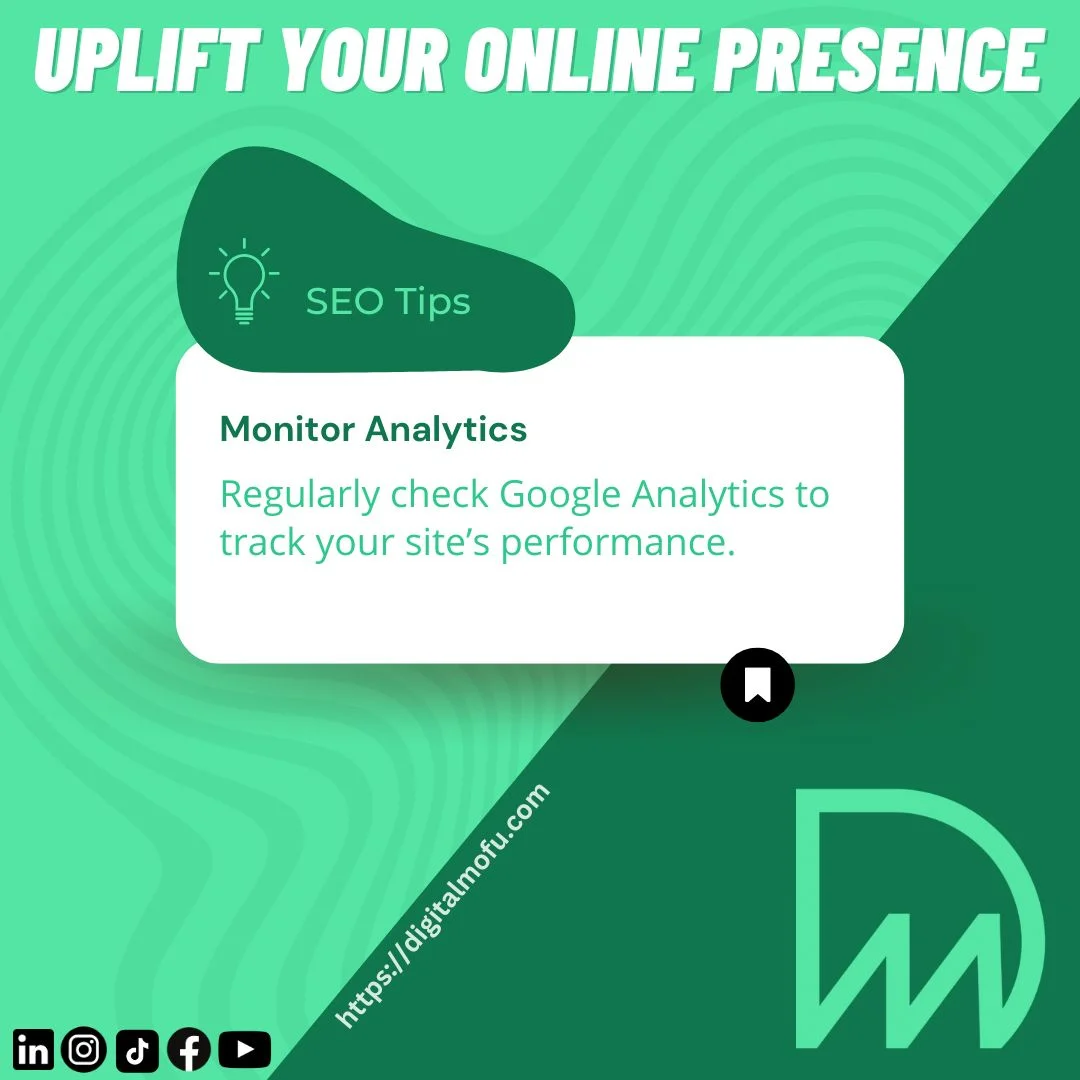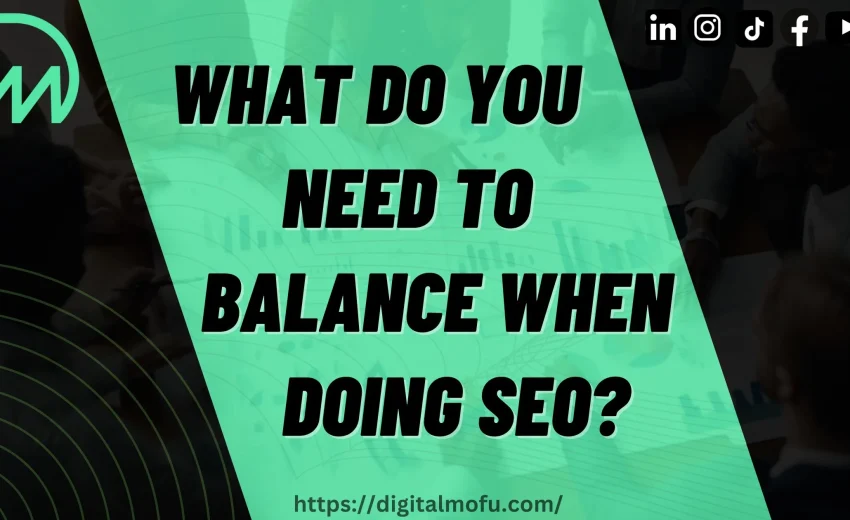SEO (Search Engine Optimization) has been recognized as an essential element in digital marketing, important for getting organic traffic and creating lasting online presences. But mastering it doesn’t involve simply following a checklist, it involves finding balance among multiple elements.
At Digital Mofu, we understand this balancing act can mean all the difference between an established site and one struggling for visibility. Here, we explore essential areas necessary for effective SEO results that drive consistent growth while engaging the target audience.
Understand SEO Balance Between Strategy, Content and Technical Optimizations
To be successful at SEO, it’s crucial that you balance three pillars: strategy, content creation and technical optimization. Strategy involves setting goals, selecting target keywords and developing competitive approaches; content is used to engage and inform an audience while technical optimization ensures your site can easily be understood by search engines.
If you neglect one or more of these three areas, it can impact the overall success of your SEO. So, taking an intentional and balanced approach allows for creating an SEO plan which drives consistent and organic growth.
Balance Keywords with User Intent
It is crucial to find the right keywords, but even more important is understanding user intent like what the searcher hopes to find. Effective keyword research involves identifying phrases that align with user needs. For instance, if someone searches “how to choose a digital marketing agency”, they likely want informational content rather than promotional content.
To align keywords with user intent:
- Research keywords that relate directly to your audience’s questions or pain points.
- Choose keywords that fit the intent of your content, such as informational, navigational, or transactional.
- Avoid keyword stuffing, which can lead to penalties. You can use keywords naturally and focus on answering users’ questions.
Content Quality vs. Content Quantity
Creating more content can improve visibility, but quality should always come first. A few well-researched informative articles will benefit your SEO more than numerous low value posts. Focus on crafting content that provides genuine value and answers user questions thoroughly.
- Quality: High quality content is in-depth, accurate and engaging. It keeps visitors on your site longer, signals relevance to search engines and encourages sharing.
- Quantity: A regular publishing schedule helps keep your site fresh and updated. However, consistency should not sacrifice quality, you can create a posting frequency that you can maintain without compromising on value.
Short-Tail vs. Long-Tail Keywords
Short-tail keywords are broad search terms (like “SEO”), while long tail keywords are more specific (like “how to balance SEO for a small business”). Long-tail keywords usually have lower search volumes but higher conversion potential.
- Use a mix of both types. Short-tail keywords help attract a broad audience, while long tail keywords target specific needs and are easier to rank for.
- Research and analyze long tail keywords related to common questions or concerns within your niche. They often have less competition and can bring targeted traffic to your site.
On-Page SEO vs. Off-Page SEO
On-page SEO involves optimizing elements directly on your site, such as headings, images and internal links, while off-page SEO refers to activities outside your site that affect rankings, like backlink building.
- On-Page SEO: Focus on creating content which is optimized for relevant keywords, using proper heading tags and adding internal links to guide users through related pages on your site.
- Off-Page SEO: Develop a backlink strategy to earn quality links from reputable sites. Guest blogging, partnerships and social media engagement can help increase your site’s authority and reach.
Balancing SEO with UX (User Experience)
A well-optimized site is only effective if it offers a smooth and enjoyable experience for users. Google prioritizes sites that are user-friendly, so balancing SEO with UX is crucial.
- Optimize for navigation: Ensure your site structure is easy to follow, with a clear menu and relevant internal links.
- Improve readability: Use clear headings, concise paragraphs and a readable font size. Users should easily find information without feeling overwhelmed.
- Focus on mobile-friendliness: Many users access sites from mobile devices, so optimizing for mobile improves both UX and SEO.
Balancing Organic SEO with Paid Strategies
Organic SEO brings long-term, sustainable traffic, while paid strategies (like Google Ads) can drive quick results. Using both can maximize your reach.
- Organic SEO: Focus on creating high-quality content, earning backlinks and improving technical SEO for steady growth over time.
- Paid Strategies: Use paid ads to boost visibility for specific products, seasonal promotions, or highly competitive keywords. Paid strategies are particularly useful for new sites or when targeting competitive terms.
Balancing Content Relevance with SEO Optimization
Content that aligns with your audience search intent should always be your goal. However, SEO-friendly content often requires strategic keyword placement, headings and links.
- Prioritize relevance: Create content that directly addresses your audience’s interests or problems. Research what users are searching for and craft content that provides clear, actionable answers.
- SEO optimization: Integrate keywords naturally, add meta descriptions and use structured headings. But don’t over optimize—search engines prioritize user-friendly, informative content over keyword stuffed text.
The Balance Between Ranking Quickly and Building Long-Term Authority
Quick SEO wins—such as optimizing titles and meta descriptions—can help you see results faster. However, building long-term authority involves creating valuable, in-depth content over time.
- Quick win tactics: Tweak meta tags, optimize images and build internal links for fast improvements.
- Long term strategies: Publish evergreen content that remains relevant. High quality articles, case studies and guides attract backlinks and build authority gradually.
Local SEO vs. Global SEO
If your target audience is within a specific region, local SEO can help you reach them effectively. For businesses targeting a wider audience, global SEO is essential.
- Local SEO: Optimize for location based keywords, create a Google My Business profile and encourage customer reviews. This helps you rank well for local searches.
- Global SEO: Use broader keywords and cater content to appeal to a diverse audience. Implement hreflang tags if your site has different languages.
Balancing Technical SEO with Content Creation
Technical SEO involves backend optimizations like site speed and security, while content creation focuses on delivering valuable information to users. Balancing both ensures a smooth user experience and good rankings.
- Technical SEO tasks: Improve site speed, secure HTTPS, fix broken links and create a clear site structure.
- Content creation: Produce relevant content regularly that addresses user queries and keeps your site fresh. Technical SEO enables your content to perform better in search rankings.

Use Analytics Based Insights vs. Creativity in SEO
Data-driven SEO relies on analytics and keyword research to refine strategies, while creativity is essential for producing unique, engaging content that stands out.
- Data insights: Use tools like Google Analytics to understand user behavior, popular content and conversion paths. Data helps optimize and refine your approach.
- Creativity: Use creative ideas to develop unique content that engages readers. Balance data insights with original ideas to make content that stands out while meeting SEO standards.
Balance SEO with Social Media Marketing
Although social media doesn’t directly impact SEO, it can indirectly boost your efforts by driving traffic and engagement. A well-rounded SEO strategy should consider social media.
- Share content regularly: Social platforms allow you to reach a wider audience and attract traffic back to your site.
- Encourage social sharing: Include sharing buttons on your content to make it easy for readers to share on their networks.
- Build community: Social media engagement can foster trust and awareness, indirectly supporting your SEO by driving traffic and increasing brand exposure.
Quality Backlinks vs. Quantity of Backlinks
Backlinks signal credibility to search engines, but quality matters more than quantity.
- Quality over quantity: A few links from high-authority sites are far more valuable than numerous low-quality links.
- Natural link building: Create valuable content that others want to link to. Avoid buying links, as this can lead to penalties.
- Monitor backlinks: Use tools to check your backlinks and remove any low-quality or spammy links that could harm your SEO.
Balance SEO with Brand Voice and Authenticity
SEO requires strategic keyword placement, but your brand voice should still come through. Maintaining authenticity keeps your content relatable and engaging.
- Integrate keywords naturally: Write in a way that feels authentic to your brand while incorporating keywords.
- Stay true to your brand: Use language and tone that reflect your brand personality. This strengthens your brand identity while building SEO authority.
- Engage with your audience: Content that sounds genuine and relatable encourages users to interact, share and trust your site.
SEO for Desktop vs. Mobile Optimization
As number of mobile users is increasing, mobile optimization is essential for SEO success. Google prioritizes mobile-friendly sites, but desktop users are still important.
- Responsive design: Ensure your site looks good and functions well on all devices, from desktop to mobile.
- Mobile-first indexing: Google uses the mobile version of your site for ranking, so optimize for mobile users with fast loading times and easy navigation.
- Optimize images and layout: Avoid large images or complex designs that may slow down mobile load times.
Equal SEO Efforts with Monitoring and Adjusting
SEO is not a one-time process. Regularly monitoring and adjusting your SEO approach helps you adapt to algorithm changes, user preferences and new trends.
- Set up regular audits: Periodically review rankings, traffic and user engagement to identify areas for improvement.
- Adjust content and strategy as needed: If certain keywords or strategies aren’t working, be prepared to pivot.
- Stay updated on SEO trends: Follow industry updates to keep your SEO efforts relevant.
FAQs
Why is user experience (UX) important for SEO?
Google prioritizes websites that offer a positive user experience. Sites that are easy to navigate, mobile-friendly and have fast loading times tend to rank higher. A good UX keeps visitors engaged, reduces bounce rates and indirectly boosts SEO.
Why is mobile optimization important for SEO?
With Google mobile-first indexing, it now prioritizes the mobile version of your site when ranking pages. Ensuring your site is mobile-friendly improves the user experience for mobile users and can positively impact your SEO performance.
Should I focus on short-tail or long-tail keywords?
Both short-tail and long-tail keywords are important. Short-tail keywords help you reach a broader audience, while long-tail keywords are more specific and typically lead to higher conversion rates. Use a mix of both to capture a wide range of traffic.






